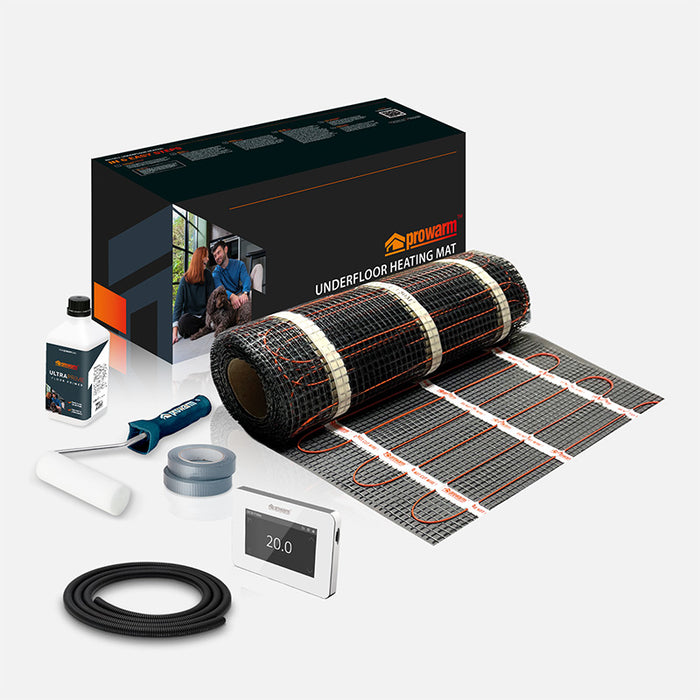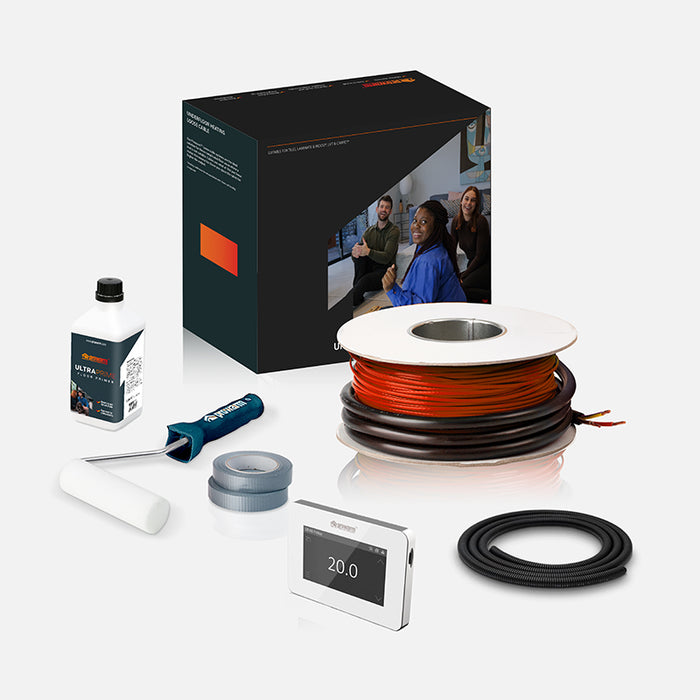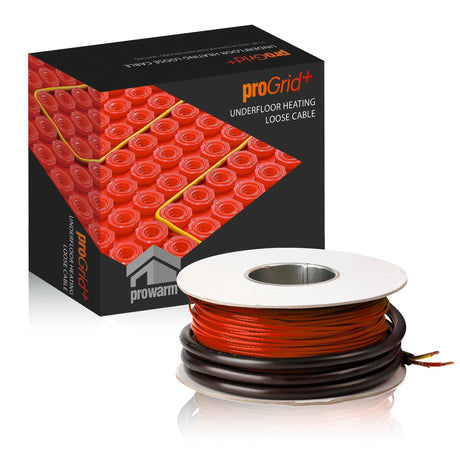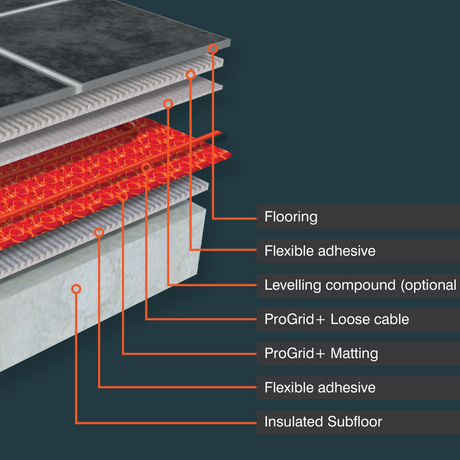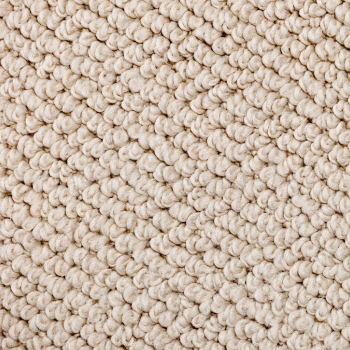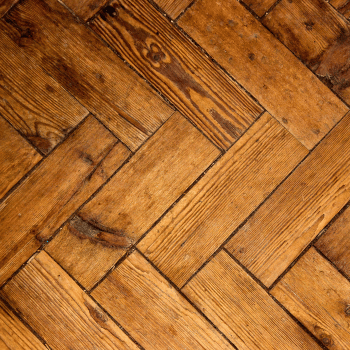Benefits of underfloor heating with tiles

Heat distribution
Tiles have excellent thermal conductivity, making them perfect for underfloor heating. Tiles distribute heat quickly and evenly across the entire floor. Forget cold spots, every part of the floor will be comfortably warm underfoot.

No cold floors
Tile floors can often feel cold without heating, especially during colder months, due to its cold, hard surface. With underfloor heating, you'll add a luxurious feel to any floor - ensuring cosy warmth underfoot.

Energy savings
Underfloor heating is highly energy-efficient, operating at a lower temperature than radiators. Lower temperatures result in less energy being used, and over time, this will lower your heating bills. Energy efficiency is further improved when paired with a well-insulated tile floor.
Choosing the right underfloor heating system for tile floors
Room size
The floor size of your project will play a major role in determining the best underfloor heating system you'll need.
For smaller spaces, such as a bathroom or a kitchen, electric underfloor heating is often the ideal choice due to its easier installation and quicker response time.
For larger areas, such as an open plan tiled living area or a tiled conservatory, water underfloor heating is bettered suited thanks to its lower-running costs.
Floor height
The available thickness or height of your floor build-up with underfloor heating will influence your choice.
Electric underfloor heating mats or cables have a lower profile and so are ideal for renovations or minimal addition to your floor height.
Water underfloor heating systems typically have a bigger build up, which adds extra height to the floor. This is an important consideration if your room has low ceilings, doors you want to avoid altering, or if you're concerned about creating uneven floor heights between a room with underfloor heating and one without. Water-based systems are ideal for new builds or when integrated into an extension, where changes to the floor structure are more easily accommodated.
Budget
Budget is an important factor when choosing an underfloor heating system.
Electric underfloor heating has a lower upfront cost and is easier to install, making them a budget-friendly solution for smaller rooms or renovations, however can be slightly more expensive to run over time.
Water underfloor heating has a higher installation cost, but is more cost-effective in the long term due to lower running costs. Running costs can be next to nothing when paired with a renewable energy source such as a heat pump, making it an efficient and sustainable heating solution.
Energy efficiency
If energy efficiency is a priority in your home or project, water underfloor heating connected to a heat pump is often the best choice. This will use less energy to maintain a comfortable temperature, particularly when paired with tiles, which retain heat well.
Electric underfloor heating is more suited for areas where quick heating is needed, but will consume more electricity if part of a full-house heating set up. If you have solar panels installed, the cost of electric will be significantly reduced, offsetting the energy consumption with the electricity generated by your renewable energy source, making it a more cost-effective option in the long term.
Best Tile Underfloor Heating Systems
View allShop by floor type
Frequently Asked Questions
How effective is underfloor heating under tiles?
How effective is underfloor heating under tiles?
Underfloor heating under tiles is extremely effective, with their main benefit being that they are a brilliant natural conductor of heat and allow for heat to spread evenly and quickly across your whole floor
Are heated tile floors expensive to run?
Are heated tile floors expensive to run?
Heated tile floors are not expensive to run at all and can be seen to be a more cost-effective system to run in the long term when compared to traditional heating systems such as radiators. Studies have shown that the yearly cost to run underfloor heating in a bathroom costs less yearly than running your washing machine!
Do tiles crack with underfloor heating?
Do tiles crack with underfloor heating?
Underfloor heating is not likely at all to cause tiles to crack, as long as the tiles themselves have been installed both flat and correct upon the underfloor heating system. During the production of a tile, they are sent to a kiln where they are raised to extremely high temperatures, thus with an average underfloor heating temperature of 25 degrees, this temperature should not affect the tile at all.
Can underfloor heating go under tiles?
Can underfloor heating go under tiles?
Underfloor heating can easily go under tiles, in fact, underfloor heating works best with tiles thanks to its high thermal conductivity. As tiles are great at transferring and retaining heat, they're the ultimate partner for underfloor heating which works at its best with such a material.





